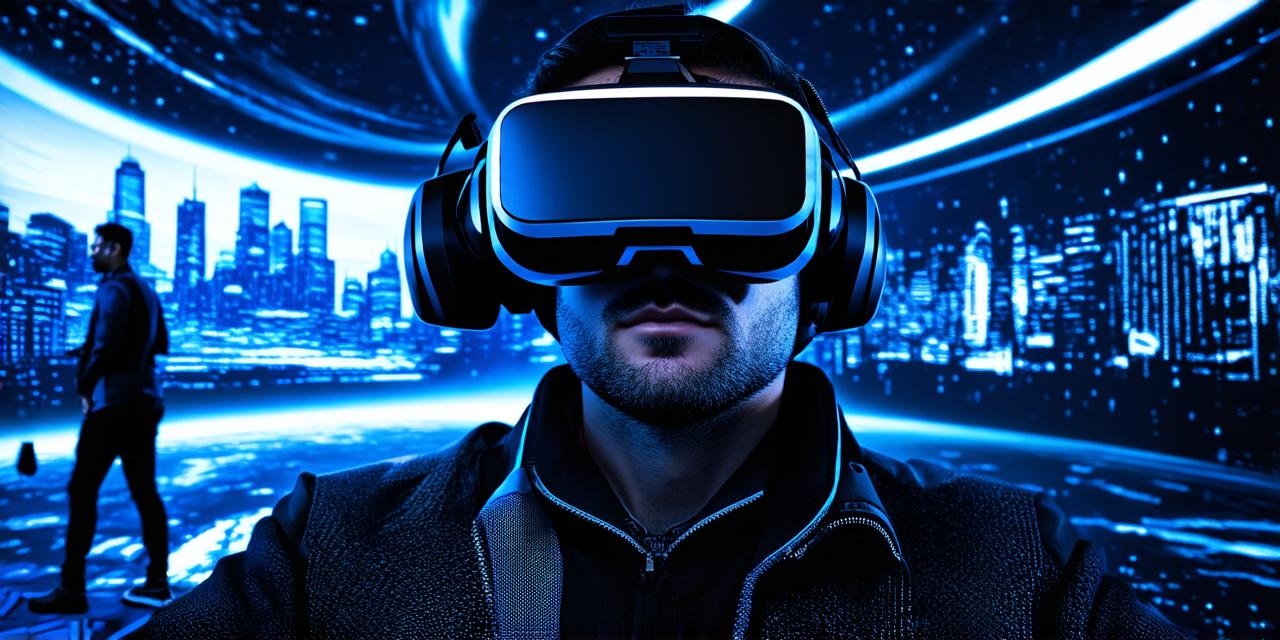Virtual reality (VR) is an immersive technology that allows users to experience and interact with a digital environment as if they were physically present. It has gained popularity in recent years, particularly in the gaming industry, but it also has applications in education, healthcare, and more.
Benefits of Virtual Reality
Virtual reality offers several benefits to its users. Firstly, it provides an immersive experience that allows users to fully immerse themselves in a digital environment. This can be especially useful for gaming, where users can become fully engaged in the game and feel like they are part of the action. It also has applications in education, where students can explore historical events or scientific concepts in a more interactive and engaging way.
Secondly, virtual reality allows for increased interaction between users and their environment. Users can interact with objects and characters within the digital world, which can be useful for training simulations or therapy sessions. For example, medical professionals can use VR to simulate surgeries or to help patients overcome phobias in a safe and controlled environment.
Thirdly, virtual reality offers a level of convenience that is unmatched by traditional methods. Users can access virtual environments from the comfort of their own homes, without the need for specialized equipment or travel. This makes it an attractive option for people who may not have the resources or time to participate in traditional activities.
Virtual Reality Development: A Growing Industry
Virtual reality development is a rapidly growing industry, with new technologies and applications emerging all the time. Virtual reality developers create virtual environments, experiences, and applications that can be used across various industries. They use specialized software to design and develop VR content, which can include 3D models, animations, and interactive elements.
Virtual reality development requires a combination of technical skills and creative thinking. Developers need to have a strong understanding of programming languages, 3D modeling, and animation techniques, as well as the ability to think creatively about how to use VR technology to enhance user experiences. As the demand for virtual reality content continues to grow, the need for skilled developers will only increase.
Case Studies: Virtual Reality in Action
There are many examples of virtual reality being used in a variety of industries. One such example is the use of VR in healthcare. Medical professionals have been using VR to simulate surgeries and to help patients overcome phobias in a safe and controlled environment. For example, a study published in the journal Frontiers in Human Neuroscience found that exposure therapy using VR was as effective as traditional exposure therapy for treating social anxiety disorder.
Another example is the use of VR in education. Virtual reality can provide an immersive learning experience that allows students to explore historical events or scientific concepts in a more interactive and engaging way. For example, a study published in the journal Computers & Education found that students who used VR to learn about ancient Rome had a better understanding of the culture and history than those who learned through traditional methods.
FAQs: Frequently Asked Questions About Virtual Reality
1. What is virtual reality?
Virtual reality is an immersive technology that allows users to experience and interact with a digital environment as if they were physically present.
2. How does virtual reality work?
Virtual reality works by simulating a 3D environment that can be viewed through specialized headsets or displays. Users can interact with the environment using handheld controllers or other input devices.
3. What are some applications of virtual reality?
Virtual reality has applications in gaming, education, healthcare, and more. It is used for training simulations, therapy sessions, and immersive learning experiences.
4. How does virtual reality differ from augmented reality?
Virtual reality creates a completely immersive experience, while augmented reality overlays digital information on top of the real world.
5. What skills are needed to be a virtual reality developer?
Virtual reality developers need technical skills in programming languages, 3D modeling, and animation techniques, as well as creative thinking about how to use VR technology to enhance user experiences.
